WHAT IS POVERTY AND WHO ARE THE POOR?
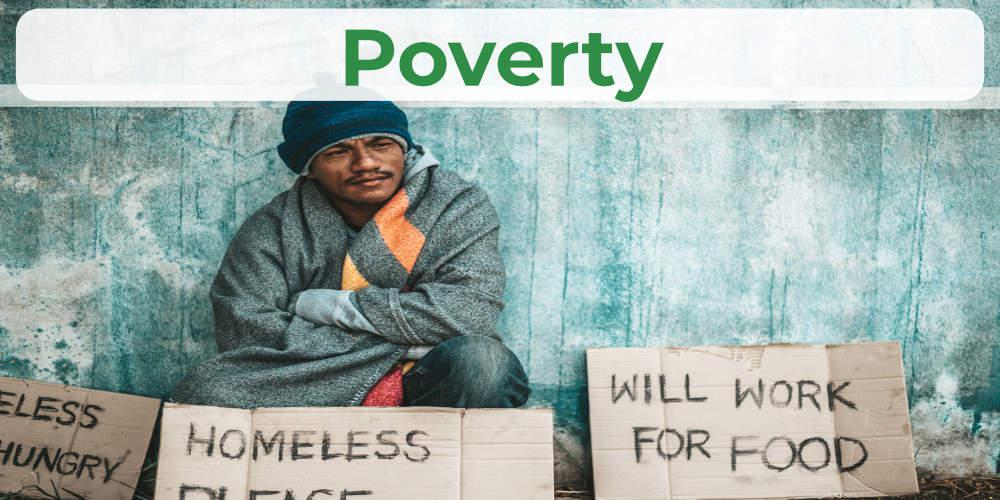
Poverty is the inability to fulfil the basic requirements of life. The minimum requirements include food, clothing, housing, education and health facilities. If these minimum needs are not fulfilled, man undergoes pain and suffering. There is loss of health and efficiency. Sickness and disabilities render him helpless in all walks of life. Generation after generation he lives in poverty, grows in poverty and dies in poverty. Poverty breeds or multiplies itself.
DEFINITION OF POVERTY:
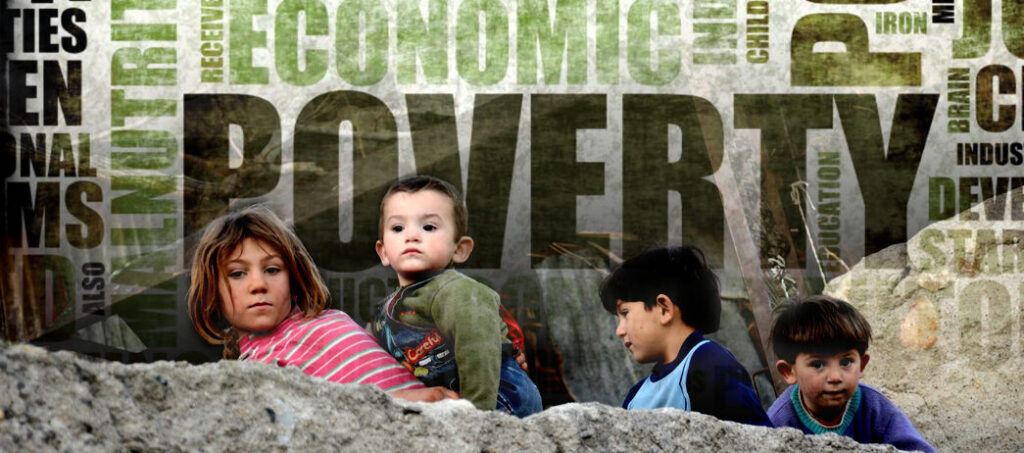
Poverty is a state of economic and social deprivation where individuals or communities lack the resources necessary to meet their basic needs for survival and well-being. These needs include adequate food, clean water, shelter, education, and healthcare. Poverty not only affects physical living conditions but also limits access to opportunities and the ability to participate fully in society.
RELATIVE AND ABSOLUTE POVERTY:
HOW ARE THE POOR IDENTIFIED?
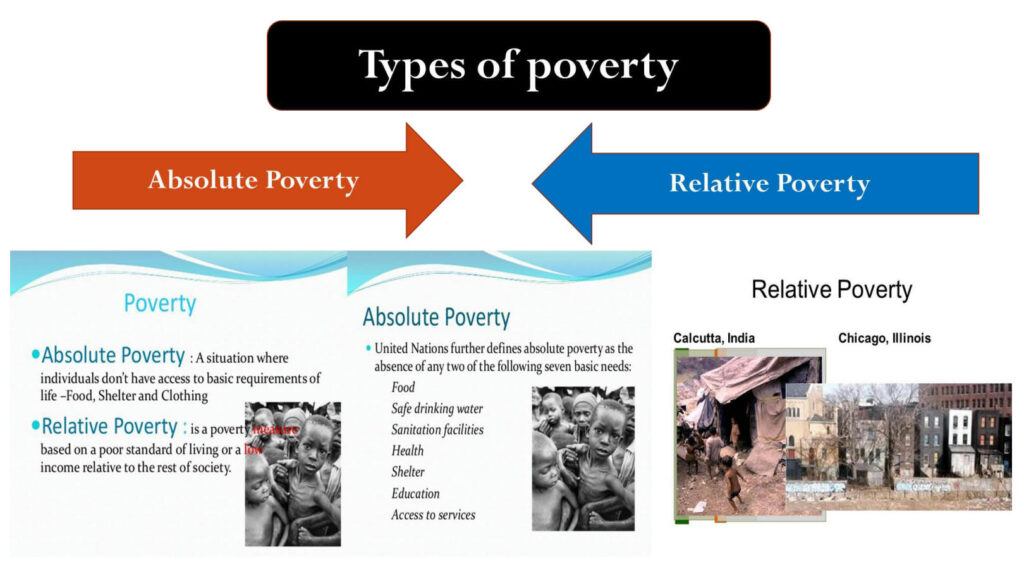
Relative poverty and absolute poverty are the two variants of poverty. Following is their brief description:
- Relative Poverty: It refers to poverty across different classes, regions or country. The country or class of people whose level of living is low is treated as poor or relatively poor in comparison to the country or class of people having high level of living.
Relative poverty is also interpreted in terms of inequality of income within the country. For example, in India, share in the national income of 20% of the people at thr bottom is barely 8.1% while that of 20%of the people at the top is 45.3%.
- Absolute Poverty: In India, the concept of poverty line is used as a measure of absolute poverty. Poverty Line refers to the cut-off point (in terms of per capita expenditure) that divides people of a region as poor and non-poor. In India, persons who spend ₹ 816 on consumption in rural areas and ₹ 1,000 in urban areas per month treated as those below the poverty line.
Based on the new official poverty line, in 2011-12, poverty rate in India is estimated to be 21.9%. In terms of the total number of absolutely poor, 21.9% in India covers over 50% of the absolutely poor in the world.
CHRONIC POOR: The people who never move above the poverty line are called Chronic Poor.
WHAT IS POVERTY LINE?

It refers to a cut-off point (usually in terms of per capita expenditure) which divides people of a region as poor and non-poor. To illustrate, if per capita expenditure of ₹1,500 per month is taken as a cut-off point then those surviving on the monthly expenditure of less than ₹1,500 will be taken as poor and those making a monthly expenditure of more than ₹1,500 will be taken as non-poor. Percentage of population below poverty line is called ‘head count ratio’ or ‘poverty incidence ratio’.
HEAD COUNT RATIO: It refers to the measurement of poverty in terms of the number of persons below the poverty line, where poverty line means some cut-off point with respect to the individual consumption expenditure per month.
CAUSES OF POVERTY:
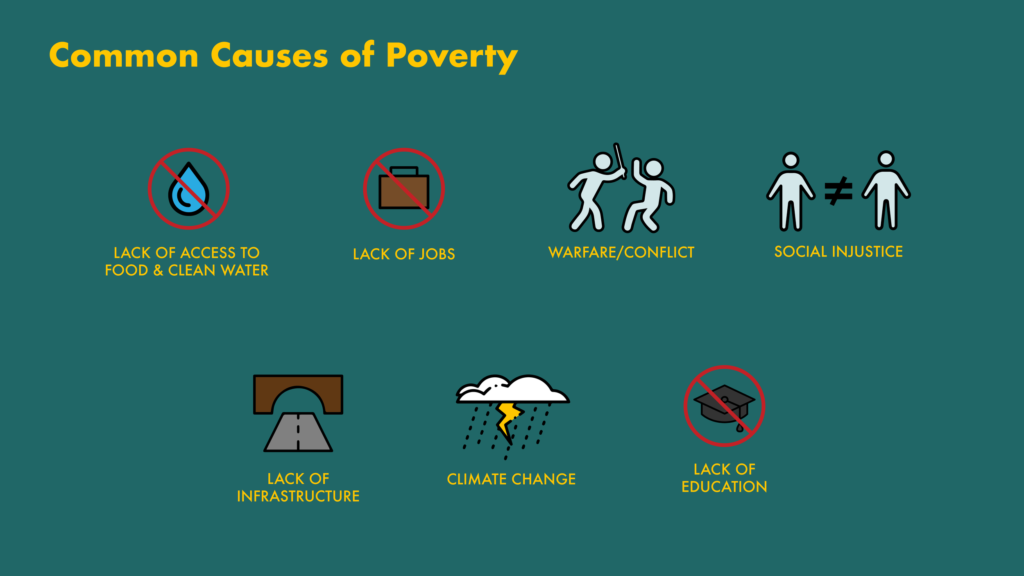
- Poverty with Reference to Underemployment of the Indian Economy :
- Low Level of National Product: Net National Product of India is low compared to its size of population. Low per capita income is the obvious consequences.
The per capita income of the country falls in the category of poorest countries, according to UNO norms.
- Low Rate of Growth: It has been quite low during Five Year Plans in India. During the period of planning, growth rate of GDP has been nearly 5%.
But owing to nearly 2% growth of population, per capita income grew by 3% only. Low growth rate of per capita income has tended to sustained poverty.
- Chronic Unemployment and Underemployment: India is a country sustaining chronic unemployment and under employment. Poverty is just a reflection of unemployment. In 2011-12 the number of unemployed person in india was around 2.45 crore. It further increased to 4.35 crore till march 2016.
- Capital Deficiency: Capital is one of the principal factors of economic growth. Accumulation of capital points to arise in production capacity of a nation.
Capital stock and capital formulation continue to be highly deficient. Lack of capital points to low production capacity. In turn, low production capacity leads to low level of employment. And, low level of employment implies high level of poverty.
- Lack of Able and Efficient Entrepreneurs: GDP growth needs efficient and skilled entrepreneurs. India lacks entrepreneurial skill. Consequently, production activity has failed to gather a momentum. Implying that we have failed to tackle poverty.
- Outdated social Institutions: The social structure of our country is full of outdated traditions and institutions like caste system and joint family system.
Such traditions and institutions obstruct dynamic changes in the economy. Growth rate is hampered and poverty is sustained.
- Lack of Infrastructure: Energy, transport, and communication- the vital components of economic infrastructure as well as education, health and housing services- the principal components of social infrastructure, are grossly deficient.
Economic and social infrastructure serves as the foundation of growth and development. This foundation continues to be weak and unstable despite more than 68 years of planning. Slow pace of growth and persistence of poverty are the obvious consequences.
- Poverty with Reference to Unequal Distribution of Income
- Poverty in India can also be explained with reference to unequal distribution of income.
- Efforts have been made by the government to moderate inequality (in the distribution of income) through a system of progressive taxation and other measures.
- But despite all such measures, poverty in india has only tended in compound overtime.
- With huge stock of wealth, the rich are able to build their fortune while the poor continue to struggle for survival.
MEASURES TO REMOVE POVERTY:
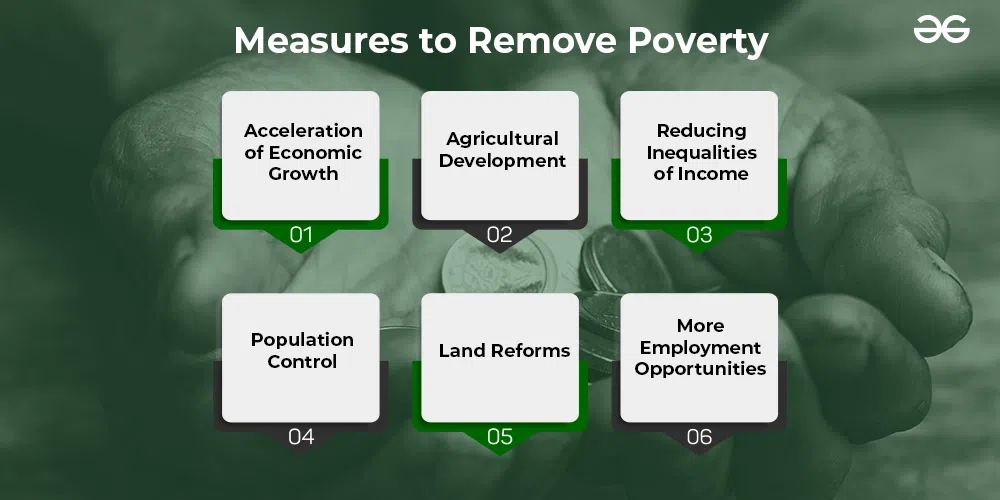
- Fiscal and Legislative Measure
- Fiscal Measures: Fiscal measures refer to the policy of taxation and subsidies. It is required that:
- The government places greater reliance on a progressive tax structure. It implies a higher tax on the rich, while the poor are exempted.
- Tax receipts of the government are used to subsidies purchases by poorer sections of the society. Subsidy is offered on the necessities of life including food, education and housing.
- Capital grants are offered to the poor for construction of their houses, beside grants for self-employment.
- Legislative Measures: It refers to minimum Wages Act, making it mandatory for the employees to offer the stipulated minimum wage to the employees. It also include such policies as of “price floor” for the purchase of farm outputs. This refers to the stipulated minimum price that must be offered to the farmers for the purchase of their output. Example – ‘Right To Education’.
- Others measuring enhancing quality of life of the poor
- Development of Agriculture
- Stability in the price Level
- Eradication of Unemployment
- Labour intensive technique of Production
- Provision for minimum needs of the Poor
- Special focus on backward Regions
- Opportunities foe self-employment
- Effective Public Distribution System (PDS)
MEASURES ADOPTED BY THE GOVERNMENT TO REMOVE POVERTY

- Jai Prakash Rozgar Guarantee Yojana (JPRGY): The scheme seeks to provide guaranteed employment in the most backward districts of the country.
- Swarna Jayanti Shahri Rozgar Yojana (SJSRY): This Yojana was launched on December 1,1997. Nehru Rozgar Yojana and Prime Minister’s Integrated Urban Poverty Eradication Programme have been merged with this yojana. The objective of this yojana is to provide self-employment or wage employment to urban unemployed or underemployed persons. It includes the following two programmes:
- Urban Self-employment Programme (USEP), and
- Urban Wage Employment Programme (UWEP).
Of the total expenditure of this project, 75% is borne by the central government and the remaining 25% by the state government.
- Prime Minister’s Rozgar Yojana (PMRY): The scheme is for providing employment to educated unemployed. The scheme provides a loan of up to Rs. 1 lakh for opening his own enterprise and Rs.2 lakh for other activities.
- Development of Small and Cottage Industries: special measures have been taken by the government to develop small and cottage industries with a view to removing poverty and unemployment through the spread of cottage and small- scale industries.
- Mahatma Gandhi National Rural Employment Guarantee Act (MGNREGA): under this act, all those who are willing to undertake unskilled manual work at the minimum wage are offered employment for a minimum period of 100 days. Those seeking employment are to report in those rural areas where the employment programme is being launched. This programme is becoming extremely popular in the rural areas. According to one estimate, the total number of individuals who have been benefitted from this programme has risen from 6.22 crore in 2014-15 to 7.77 crore in 2018-19.
- Micro Units Development Refinance Agency Bank (MUDRA BANK): The government has set up MUDRA Bank in April, 2015. Its objective is to meet credit needs of micro enterprises and self-employed persons. Under MUDRA yojana, a micro enterprise is entitled for a loan up to Rs. 10 lakh per unit.
ADVANTAGES OF POVERTY
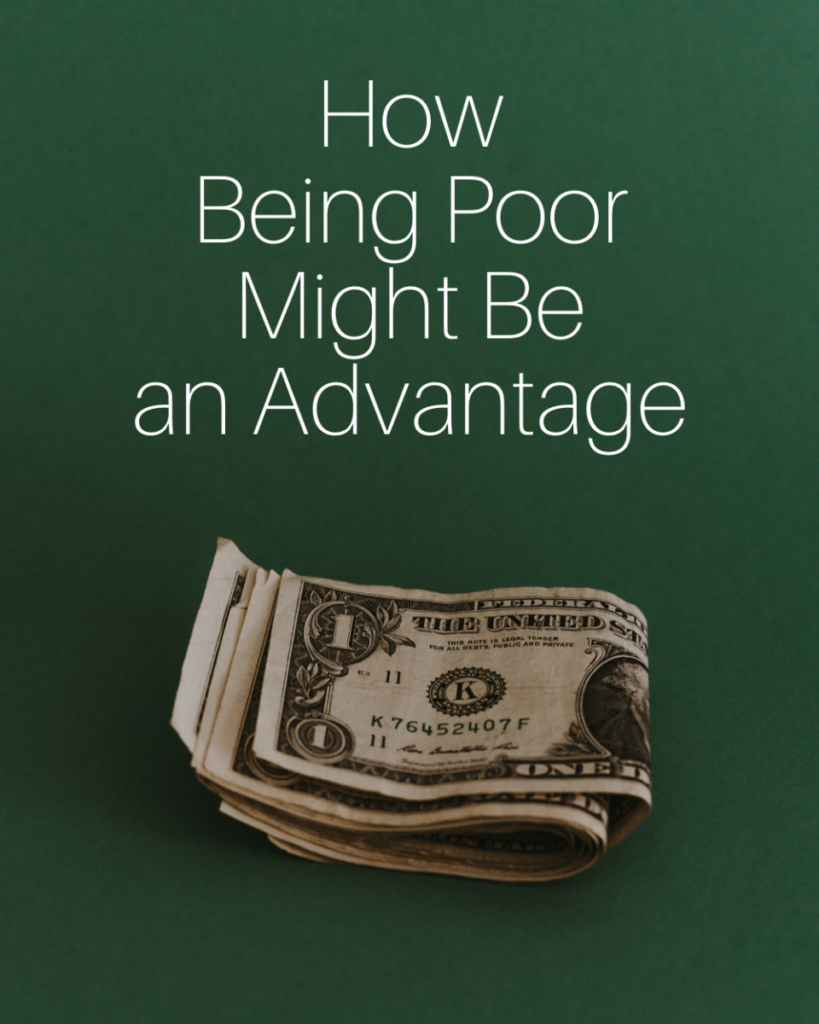
When you are poor, you develop skills that a wealthier person never has the opportunity to learn. There are many things you can learn simply by doing, and when you are poor, you have to do most things for yourself.
- You know how to cook your own food, clean your own house, and do basic home and auto repairs because you cannot afford to outsource that work.
- You learn how to juggle schedules when you have more than one job at a time.
- You know where to find help and how to coordinate resources in a way that works best for your situation.
- You also understand the importance of a good network and probably have strong ties with the community.
- You will often trade favors with friends and family.
- When you are poor, you learn to make do with what you have.
- You are creative with finding ways to do things in an economical fashion.
- You also know how to do without many things that other people consider necessities.
- When you are poor, you do not feel the need to keep up with the Joneses. Even if you wanted to, you couldn’t afford to.
- You buy less stuff, which helps keep your house cleaner and makes it easier to move from your current location to another one if the landlord increases the rent.
- Since you buy less stuff and use less energy to save money, you are better for the environment and have a smaller carbon footprint.
- When you are poor, you develop personal strength. You know you are capable of facing adversity because you have had lots of practice. You know that you can handle the tough times because you have gone through them and survived.
- If you are unemployed, you have free time. Even though you may feel uncomfortable or guilty about not working, unemployment gives you time to spend with your children, clean the house, pursue additional education, and enjoy inexpensive hobbies.
- The biggest advantage is that handling adversity makes you stronger.
DISADVANTAGES OF POVERTY

Of course, there are many disadvantages of being poor.
- Dependency: You can become dependent on the help you receive. Most of the help uses an income range as criteria for determining which people they are willing to help. If your income is close to the outside range, it may be scary to try to increase your income because you know you will stop getting help, and sometimes the amount of help you are receiving is greater than the initial increase in income.
- Low Esteem: Some people will look down on you because you are poor. They may think you are lazy, fat, or stupid. Many people feel shame when they are poor.
- Health Issues: When you are poor, you may forgo nutrition for calories just to save money. By eating a lot of starches, you may gain weight. You may also have medical issues that are unresolved because you cannot afford to go to the doctor for preventative checkups.
- Limited Network: When you are poor, you tend to have a limited network. Poor people tend to live around and mingle with other poor people. These people cannot afford to help you very much since they are barely trying to make ends meet themselves. They also lack the skills and network to help overcome poverty.
- No Role Models: It is harder to get out of poverty because you don’t have positive role models to show you the way. If you don’t see people going to jobs that they like, who are able to buy the things they want, then you may not see the benefits of working. Even if you know there are benefits, you may find it hard to learn how to write a resume or make connections that help you find the resources you need to get out of poverty. (Although, with the help of the internet, I hope that some of these resources are more available.)
- Low Self-Esteem: Being poor can lower your morale and make you feel unworthy. When people aren’t willing to give you a job or pay you more, you may think your low income determines how much you are worth as a person.
- Growing Accustomed to Poverty: Even though you have the time to clean your house, you may not have the motivation to do so. You may find that it is too expensive to fix many things that go wrong in the house and let them go. Over time, you may habitually learn to live with problems, even problems that are cheap and easy to solve. You may develop a mentality that forgets that most problems can be solved. It is easy to get depressed under these circumstances.
- Not Getting Basic Needs Met: When you are poor, you have to do without many things that you want, and sometimes even things you need.
- Being Poor Is Expensive: Your credit may be bad because you are not able to pay your bills on time, causing you to pay late fees and increased interest on loans, if you can even qualify for loans. You might have to make decisions that are bad for you in the long term just to get cash in the short term, from payday lenders, tax anticipation loans, check cashing places, and pawn shops.
- Stress: Poverty causes stress, and the stress will often be seen in relationships, as the family members argue over how to best juggle the bills and deal with the problems.
Other Causes of Poverty:
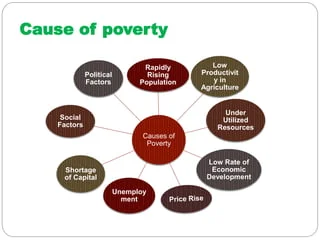
- Inequality in the Distribution of Income and Assets: The poor mainly consists of unskilled labor, which typically does not command a high enough level of wage income.
- The benefits of the growth have been concentrated and have not “trickled down” sufficiently to ensure improved consumption among the lower income groups.
- Lack of Access to Social Services: The lack of access to social services such as health and education compound the problems arising from inequality in the ownership of physical and human assets.
- Lack of access to Institutional Credit: The banks and other financial institutions are biassed in the provision of loans to the poor for the fear of default in the repayment of loans.
- Further, the rules regarding collateral security, documentary evidences etc. present constraints for the poor to avail loan facility from banks.
- Lack of Productive Employment: The magnitude of poverty is directly linked to the unemployment situation.
- The present employment conditions don’t permit a reasonable level of living causing poverty.
- The lack of productive employment is mainly due to problems of infrastructure, inputs, credit, technology and marketing support. The gainful employment opportunities are lacking in the system.
- Caste system: Caste system in India has always been responsible for rural poverty. The subordination of the low caste people by the high caste people caused the poverty of the former.
- Social customs: The rural people generally spend a large percentage of annual earnings on social ceremonies like marriage, death feast etc. and borrow largely to meet these requirements. As a result, they remain in debt and poverty.
- Vicious Circle of Poverty: Low level of saving reduces the scope for investment; low level of investment yields low income and thus the circle of poverty goes on indefinitely.
- Low Productivity in Agriculture: The level of productivity in agriculture is low due to subdivided and fragmented holdings, lack of capital, use of traditional methods of cultivation, illiteracy etc.
- This is the main cause of poverty in rural India.
- Lack of urban planning, especially that for housing low-income categories and provision of land for informal sector activities;
Further Reading: Agricultural Policy of India: Objectives, Components & More
Consequences:
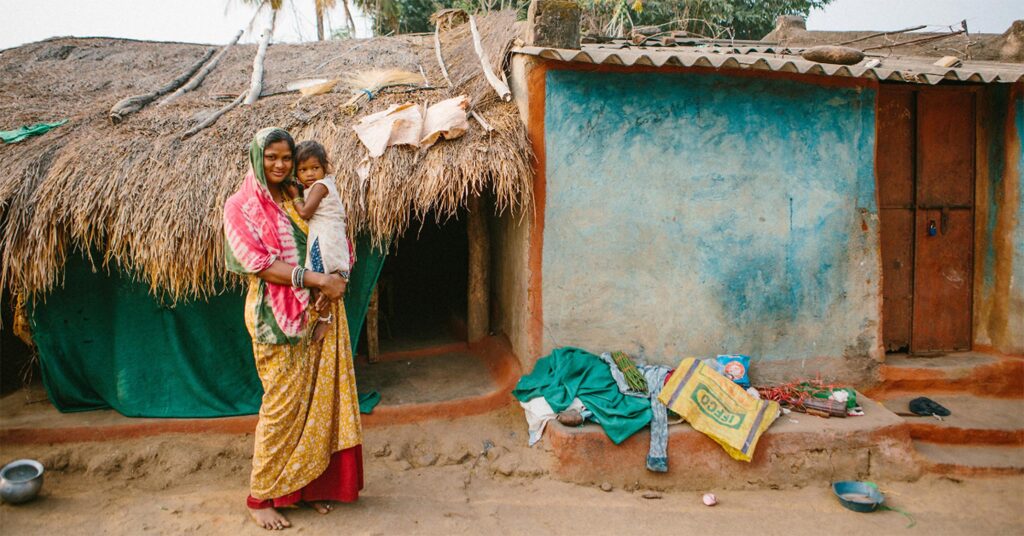
- Malnutrition and resultant physical and mental ailments were the direct results of poverty.
- Unemployment or underemployment and the casual and intermittent nature of work in both rural and urban areas that compels indebtedness, in turn, reinforces poverty.
- The poor have more stressful lives due to financial burdens and worries, and this stress can bleed into their personal lives.
- Poor people are more likely to have several kinds of family problems, including divorce and family conflict.
- Poor people are more likely to engage in criminal activities such as robbery, homicide, and burglary.
- However, they are also more likely to be the victims of street crime.
- Children growing up in poverty are less likely to graduate high school or go to college, and they are more likely to commit street crime.
- The main victims of caste, religious and other discriminatory practices are poor.
- Government initiatives are yet to transform the ownership of assets, processes of production and meet the basic amenities of the poor.
CONCLUSION

Poverty remains one of the most pressing global challenges, affecting millions of people across all continents. It encompasses not only a lack of financial resources but also limited access to education, healthcare, clean water, and opportunities for upward mobility. Poverty perpetuates cycles of inequality and stunts economic development, creating a divide between the privileged and the underprivileged.
The root causes of poverty are complex and multifaceted, including systemic inequality, unemployment, political instability, environmental degradation, and inadequate social safety nets. Addressing these issues requires a holistic approach that prioritizes sustainable development, inclusive economic growth, and equitable resource distribution.
Effective solutions include investing in education, promoting fair trade, enhancing access to healthcare, and empowering marginalized communities. Governments, international organizations, and local initiatives must collaborate to implement policies that address both immediate needs and long-term systemic barriers.
While significant progress has been made through initiatives like the Sustainable Development Goals (SDGs), much work remains to eradicate poverty entirely. Achieving this requires collective action, a commitment to equity, and the recognition that alleviating poverty benefits society as a whole by fostering peace, stability, and shared prosperity. Ending poverty is not just a moral imperative—it is essential for a sustainable and equitable future.
